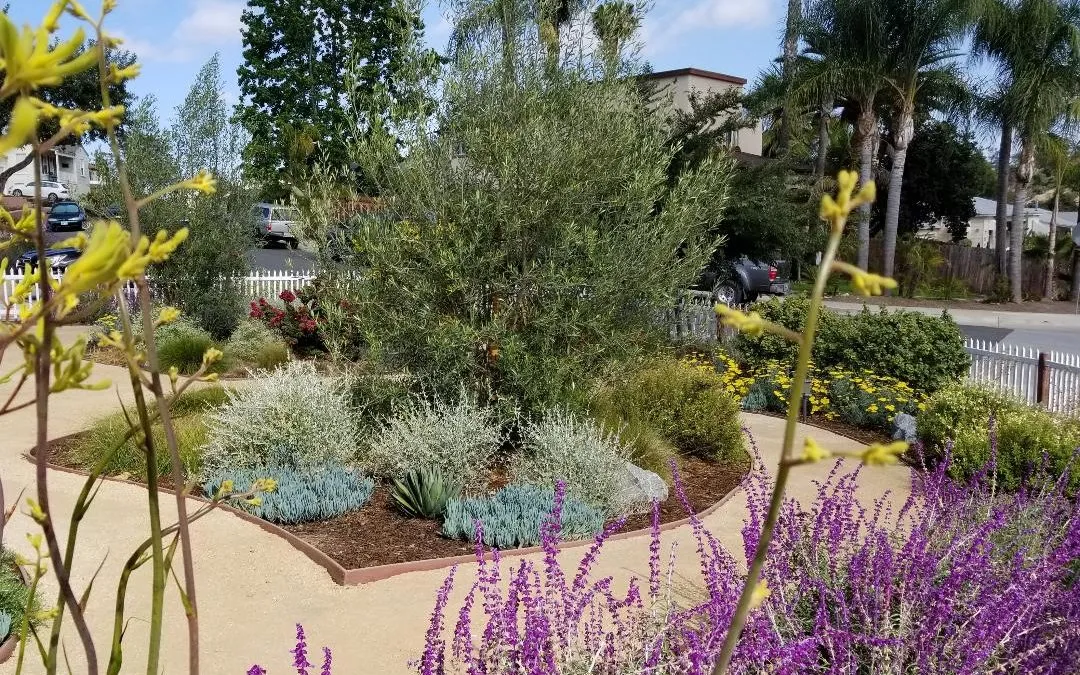Water-wise landscaping, also known as xeriscaping, involves designing and maintaining outdoor spaces in a way that minimizes water consumption while promoting sustainability. Here are the basic principles of Water Wise Landscaping:
- Planning and Design:
- Begin with a well-thought-out plan that considers the natural features of the site, including soil type, sun exposure, and existing vegetation. A carefully designed landscape can optimize water use and reduce the need for excessive irrigation.
- Soil Improvement:
- Enhance the soil’s ability to retain water by adding organic matter such as compost. Well-amended soil helps with water retention, improves drainage, and supports healthier plant growth.
- Drought-Tolerant Plants:
- Select plants that are well-suited to the local climate and require minimal water once established. Drought-tolerant plants often have adaptations to conserve water, such as deep root systems or succulent leaves.
- Mulching:
- Apply a layer of organic mulch around plants to reduce evaporation, suppress weeds, and regulate soil temperature. Mulching helps retain moisture, reducing the need for frequent watering.
- Efficient Irrigation:
- Use efficient irrigation systems that deliver water directly to the root zone of plants. Drip irrigation, soaker hoses, or smart irrigation controllers that adjust based on weather conditions can minimize water waste.
- Water Zones:
- Group plants with similar water needs together in the landscape. This allows for more precise irrigation practices, ensuring that each plant receives the appropriate amount of water without overwatering.
- Rainwater Harvesting:
- Consider implementing rainwater harvesting systems to capture and store rainwater. Collected rainwater can be used for irrigation, reducing the reliance on municipal water sources.
- Smart Plant Placement:
- Strategically place plants based on their water requirements and sunlight needs. Grouping plants with similar needs and placing them in appropriate microclimates can optimize water usage.
- Appropriate Turf Areas:
- Limit the use of water-intensive turf areas, especially in regions with water scarcity. Choose drought-resistant grass varieties or replace some turf areas with alternative ground covers, gravel, or permeable paving.
- Regular Maintenance:
- Regularly inspect the landscape for leaks, broken irrigation components, or signs of overwatering. Adjust irrigation schedules based on seasonal changes and plant requirements.
- Education and Awareness:
- Educate property owners, clients, and the community about water-wise landscaping practices. Raise awareness about the importance of water conservation and the benefits of sustainable landscaping.
- Native Plants:
- Incorporate native plants into your landscape design. Native plants are well-adapted to local conditions, often requiring less water and maintenance compared to non-native species.
- Integrated Pest Management (IPM):
- Implement integrated pest management practices to control pests without resorting to excessive water use. Avoid overwatering, which can create conditions favorable to certain pests.
- Minimize Turf Areas:
- Where possible, minimize the use of traditional lawns and turf areas. Focus on creating functional and visually appealing landscapes with a variety of low-water-use plants and features.
By adhering to these principles, water-wise landscaping can help create beautiful and sustainable outdoor spaces that conserve water, reduce environmental impact, and promote long-term ecosystem health.



